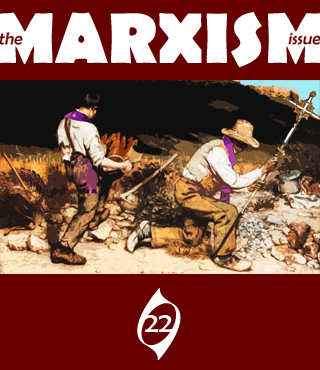We live in a world shaped by capitalism, an economic model that (we’re told) provides the very best opportunity for economic and social mobility, the very best economic system to promote human flourishing. It’s a narrative the Western church has dogmatically adopted and, as a result, the good news of Christianity has become fused with the creed of capitalism. In this our twenty-second issue of The Other Journal, we seek to challenge these norms by bringing theology and Marxist critical theory into conversation. By unsettling the marriage of capital and Christianity and exposing the darker side of capital’s power, we hope to free ourselves and our congregations to practice a more just and faithful form of life.
The philosopher Paul Ricoeur placed Karl Marx among the masters of suspicion (along with Nietzsche and Freud) because Marx drew back the curtain on capital, unveiling the hidden historical and material conditions that inevitably surrounded capitalism. Here we seek to draw back the curtains again. We are not concerned with orthodox Marxism or with promoting Communism, as if all of the one thousand Marxisms could be reduced to these ideologies. Instead, we hope to learn from the historicism, humanism, and materialism of Marxist thought, to have our theology illuminated by Marxism’s distrust of empire and its disenchantment with the power and promise of capital. Indeed, with rising income inequality—reinforced by the growing disparity between record stock market prices and stagnant household incomes—the Marxist critique of capitalism is more relevant than ever.
Over the next couple of months we’ll work to initiate a cross-disciplinary conversation that disentangles us from these simple cultural assumptions and that helps us to envision better alternatives for our daily lives, for the lives of our churches, and for the culture at large. As Alasdair MacIntyre has stated, “If we are to be able to construct and sustain practice-based forms of local participatory community that will be able to survive the insidious and destructive pressures of contemporary capitalism and of the modern state,” then “the politics of such communities and of the struggles to construct and sustain them will be much more effective if it is conducted by those able to understand and to learn from both Christianity and Marxism and to understand their relationship.”
About the cover image:
Our image for this issue is based on the painting Les Casseurs de pierres (The Stonebreakers) by Gustave Courbet. The painting was first exhibited during the Salon de Paris of 1850, only two years after the publication of Marx’s Communist Manifesto, and according to accounts of the event, the bourgeois attendees of the Salon were appalled by its portrayal of the hard labor of the proletarians. Some art historians have interpreted the presence of both young and old in the image as a nod toward the inescapable nature of the class system, but whatever Courbet’s intentions, the bourgeoisie’s fearful reactions to the work have made it stand as one of the earliest, most poignant announcements of Marxism to the culture of Europe. As a first step in our study of the relationship between theology and Marxism, we have re-created this iconic image and adorned the proletariat with Lenten vestments, trading their hammer for the processional cross, the stones broken by their labor for the Eucharistic elements.
